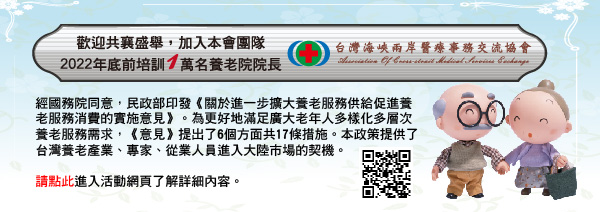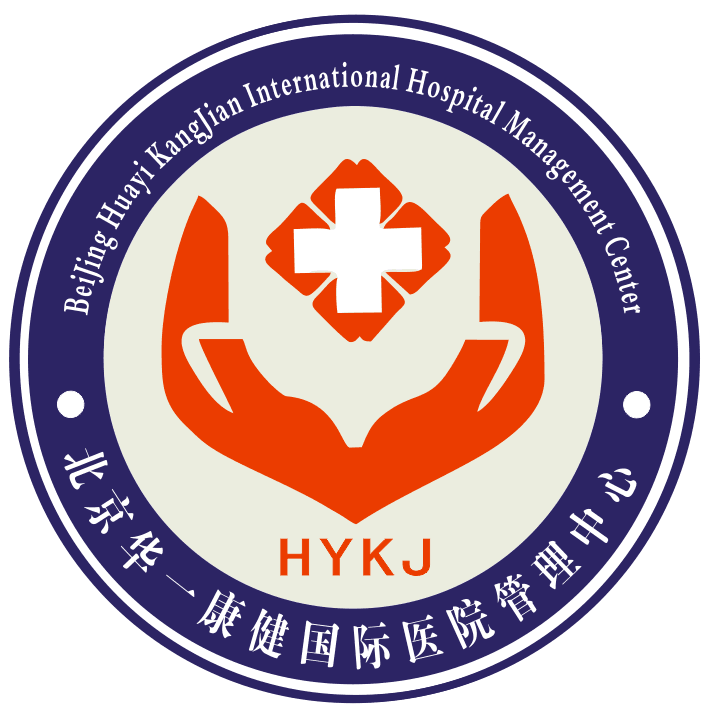首页 > 动态消息 > 2016年媒体报导 > CRI专访诺贝尔经济学奖得主:中医在国际上将有无限的可能 2016-09-01
CRI专访诺贝尔经济学奖得主:中医在国际上将有无限的可能
2016-06-03 诺奖得主医学峰会
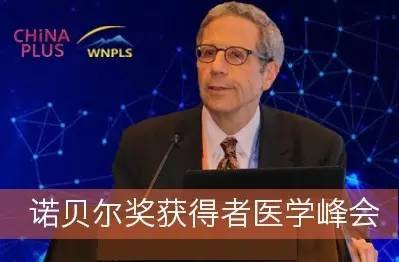
2016年5月29日,2007年诺贝尔奖经济学奖获得者Eric S. Maskin(埃里克·马斯金)受诺贝尔奖获得者医学峰会组委会邀请,参加京交会并在中医药科技创新论坛发表了演讲,演讲结束后接受了来自中国国际广播电台(CRI)的采访。采访围绕经济学与现代医学的关联,经济结构如何促进医疗结构的发展进行了深入的探讨,以下是来自中国国际广播电台(CRI)与埃里克·马斯金的对话。
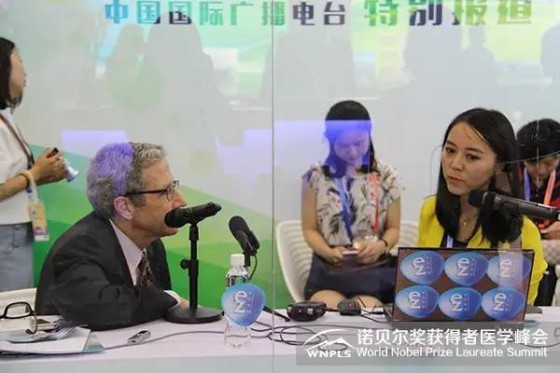
Eric S. Maskin 接受CRI专访
CRI: I have a distinguished guest in the studio, Mr. Eric Maskin, American economist and 2007 Nobel Prize winner for Eeconomics. He won the Nobel Prize for hiswork onMechanism Design Theory, a special form of Game Theory that attempts to maximize gains for all parties within markets. I hope I have explained it correctly. Thanks for joining us, Mr. Maskin.
CRI:我们今天邀请到了美国经济学家、2007年诺贝尔经济学奖得主埃里克·马斯金先生。您因机制设计理论而获得了2007年诺贝尔经济学奖。这是一个很特别的博弈论形式,它试图使市场各个参与者的利益得到最大化。我是这样理解的。谢谢您接受我们的专访。
CRI:Mr. Maskin, this time you are here to attend a healthcare-related conference. I think a lot of people might just wonder what does an economist do at a medical forum. So please tell us about the event and the things you are doing there.
CRI:马斯金先生,这次您来参加医疗领域相关的大会,我想很多人可能会好奇,经济学专家参加医学论坛会做些什么呢。能不能请您谈谈您这次参加的论坛以及您在论坛上都做了些什么。
Eric:Well, as an economist, I am interested in economic constitutions which can help promote medical technology. One important tool in medicine is the use of drugs or medicines in various kinds. These are typically expensive to invent. And if you want to invent a new drug, you have to put in aninvestment of time, energy and money. And so economists want to study under what circumstances inventors will be willing to make such investments. And that is what I talked about in the conference.
埃里克:作为一名经济学家,我对经济结构感兴趣,因为它可以促进医疗技术的发展。在各种不同情况下对医药产品的使用,是医学领域的一个重要工具。而发明新药是极其昂贵的。如果你想要开发一种新药,就必须投入时间、精力以及金钱。因此,经济学家就要去研究在何种情况下,投资者们愿意投入这些成本。我在大会的演讲内容就是这个。
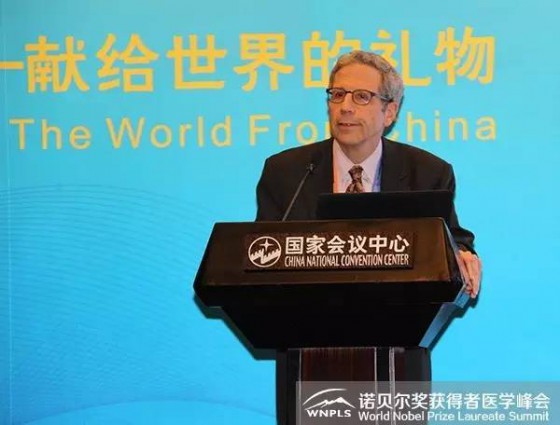
Eric S. Maskin 在会场进行发言
CRI: So what was the main idea that you gave in your presentation there?
CRI:您的主要观点是什么呢?
Eric:There is an old idea that in order to protect inventors from imitation, they need to be awardedsome intellectual property rights, such as patents. If I have a patent in my discovery that prevents you from imitating, and so it helps me get back the investments that I’ve made in developing that invention. But in the talk, I was suggesting that there are some circumstances where patents can actually be counterproductive. And that was the main focus of my talk to say that in some kinds of industries we do not actually benefit as a society from awarding patent protection to innovators. We are better off if imitation can occur.
埃里克:这是老生常谈的东西,为了防止新开发的产品被抄袭,开发者们就需要被赋予智慧财产权,比如专利。如果我发明的东西申请了专利,而你不能仿造,这有助於我收回我在开发这项产品时做出的投入。但我的演讲中提到,某些情况下,专利保护可能会起到适得其反的效果。所以我演讲的主要观点是,在某些领域,无论是从专利保护来说,还是从创造者来说,都无法从专利保护中获利。相反地,如果能够适当地被模仿,我们可以变得更好。
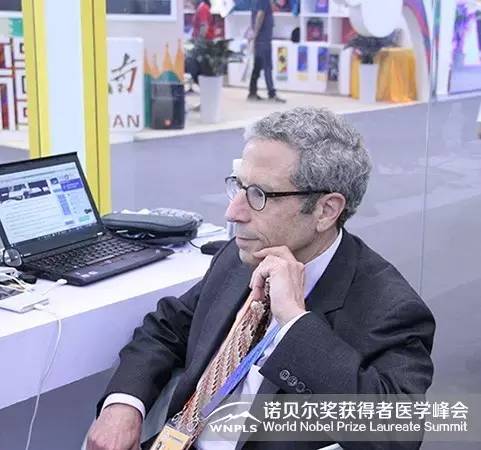
Eric S. Maskin 接受CRI专访
CRI: I know you are very famous for your theory on patents. You suggestedthat some patents will inhibit innovation rather than stimulate progress. I actually find your own words on Wikipedia, a magic website that patent protection may reduce overall innovation and social welfare. Here in China, we areall emphasizing the importance of patent protection, IPR protection. So you’d better give us some examples.
CRI:您的专利理论非常著名。您说过:一些专利不会促进发展,反而抑制创新。我在维琪百科上找到了您说的话,您说专利保护可能会减少整体创新和社会福利。在中国,我们强调专利保护、智慧财产权的重要性。因此,您能给我们举例说明吗?
Eric:Well, let me say, first thatI’m not arguing against all patent protection. But in some industries, innovation tends to be sequential. That means that each discovery builds on a last one, and in order to make progress, we have to take many small steps instead of a few big steps. In industries where innovation is sequential, then patents can actually interfere with innovation. If I’ve made a discovery, and I put patents on it that makes it hard for you to build on what I’ve done and take thenext step because I can block your improvements. And that might be good for me, but it’s not going to begood for you and it may not begood for society, because society will be deprived of the improvement that you make on my discovery.
埃里克:首先,我要说明的是,我并不反对专利保护。但在某些行业,创新是具有连贯性的,就是说每个发明都是在上一个发明的基础上创造出来的。为了不断进步,我们必须慢慢向前迈进,而不是一下子产生一个巨大的发明。如果在一个产业的发明是具有连贯性的,那么专利保护其实会阻碍创新。如果我有了一项新发现,而我申请了专利,你再在我的发明的基础上做出创造是很困难的,因为我申请的专利会阻碍你的进步。这也许对我来说是有好处的,但是对你没好处。对於社会也没什么好处,因为社会被剥夺了进步的权利。
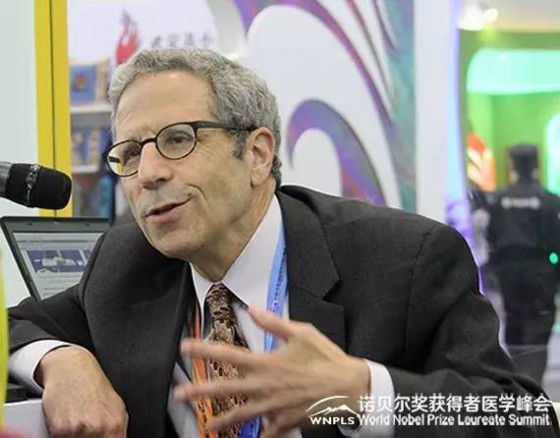
Eric S. Maskin 在专访间回答主持人问题
CRI:Yes, if I want to stand on the shoulders of a giant, it’s impossible. Because thegiant won’t let you tostand on his shoulders. I can see that. But still for other people, it’s a reasonable demand that they get patented. How can you solve this conflict?
CRI:是的,如果我想站在巨人的肩膀上,那是不可能的,因为巨人不想让你站在他的肩膀上。但是对於其他人来说,获得专利是他们的合理需求。您会如何解决这个矛盾呢?
Eric:You have to decide which industries are truly sequential,and which are not. If anindustry does not involve sequential innovation, if it takes the form of unique big discoveries, then patent protection probably is important to safeguard innovation. But if an industry, andI think software is a good example of this,and maybe pharmaceutic alsalso, if innovation is highly sequential, then patents might be a bad idea. So rather than having a policy where you always give patents or you never give patents, you need a more discriminating policy which distinguishes different industries from each other.
埃里克:你必须辨别哪些产业的发明是真正具有连贯特性的,哪些不是。如果这个行业创新并不具有连续性,如果它只是采用了一种独特的发现形式,那么申请专利保护对於这个行业的创新保护是很重要的。但是如果对於一个行业来说,比如软体行业就是个很好的例子,或者医药行业,创新是具有高度连贯性的,专利保护对它们来说可能就是个坏主意。所以说,与其制定政策规定某个产业一定可以或者一定不能申请专利保护,不如告诉大家如何辨别这个行业是否有必要申请专利保护。
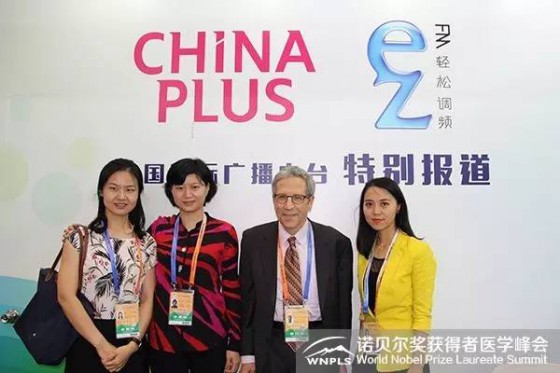
诺贝尔奖获得者医学峰会组委会工作人员、Eric S. Maskin 和CRI主持人 合影
CRI:You are a Nobel laureate and we really want to understand your theory. Can you please explain verybrieflyin layman'term about your Game Theory? We want to learn, we want to know about it.
CRI:作为一个诺贝尔奖获得者,我们很想真正地了解您的理论。您可以给我们简单讲讲您设计博弈理论的机制吗?
Eric:I’m contributed to a field, a part of the game theoretical mechanism design. In mechanism design, we start with some particular goals that we want to achieve, the society wants to achieve, then we try to figure out what mechanism, what game or what institution will best achieve those goals. I can give a little example if you like. Suppose that you have a cake, that you want to divide between two children. And your goal is to make sure that each child is happy with the piece that he or she gets. So first child prefers his own piece to the second child’s piece and vice versa. How do you achieve that goal? (Cut it in half?) That sounds good, but theproblem is that you don’t know how the children do the cake themselves. So you might think you cut the cake exactly in half, but the children might disagree. How do you proceed if you don’t know how the children feel the cake? That’s mechanism design. So it turns out that there is a very simple but very ingenious solution to this problem. It’s called the Divide and Choose Mechanism where one child cuts the cake and the other child chooses which piece she wants for herself. And this works because the child who cuts the cake knows that the two pieces are unequal, the other child will take the big one.That’s the kind of idea that we use in Mechanism Design Theory--how do you achieve a fare outcome or a desirable outcome when we don’t know how the participants themselves view the possibilities.
埃里克:我致力於这个博弈论的研究,它是机制设计理论的一部分。在机械设计理论中,我们首先设定我们想要达到的特定目标以及社会想要取得的目标,然后我们再试图去弄明白是什么机制,什么游戏规则或者是什么机构能够最好地达到那些目标。我给你举个例子。假设你有一块蛋糕,你想让两个小朋友去分它。而你要确保每个小朋友都很满意他得到的那块蛋糕。你怎么才能达到这个目的呢?(主持人:将蛋糕切成两半?)那听起来是个好主意,但问题是你不知道小朋友们是想怎样分这块蛋糕的。你认为你把蛋糕切成了均等的两块,但是小朋友们并不这么认为。如果在不知道小朋友们的想法的情况下,你怎么处理这件事呢?这就是我的机制设计理论,要处理这个问题,有一个很简单但是很巧妙的办法,叫做分割与选择机制,就是让一个小朋友来切蛋糕,让另一个小朋友来选择他想要的那块。这个办法起很管用,是因为切蛋糕的小朋友知道如果他没有把这两块蛋糕切得一样大,另一个小朋友一定会选择更大的那块。这就是我们在机制设计理论中使用观点,在你不清楚其他参与者的观点的情况下,如何取得既定的理想目标。
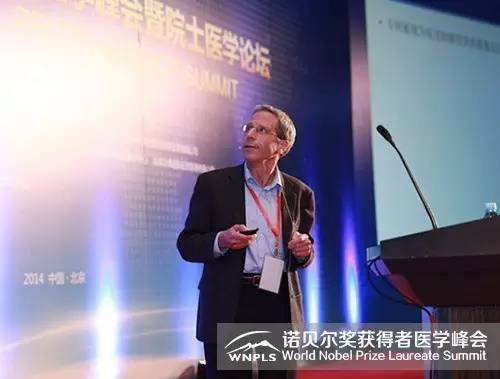
Eric S. Maskin在2014年诺贝尔奖获得者医学峰会上做主题发言
CRI:You participated in the 2014 World Nobel Prize Laureate Summit and gave a plenary talk at the meeting. What’s your memory about this event?
CRI:您参加了2014诺贝尔奖获得者医学峰会,并做了主题发言,您对这个活动有什么印象吗?
Eric:I was here in Beijing for the 2014 Nobel Prize Laureate Summit two years ago. And I met many Chinese traditional medicine doctors and scientists. I was impressed with the TCM theory and clinical practice. Last year Dr. Youyou Tu, a TCM scientist won China's first Nobel Prize on natural sciences. I do believe that modern TCM will join the main stream of world biomedical sciences and have a great future.
埃里克:2年前我到北京来参加了诺贝尔奖获得者医学峰会,见到了很多中国传统医学的医生和科学家,我对他们的理论和临床研究印象深刻。去年,一位中医科学家屠呦呦获得了中国第一个自然科学类的诺贝尔奖,我相信,未来中医在国际上将有无限的可能。
CRI:You’ve explained your theory in a very simple way, easy to understand, but sadly we don’t have enough time to go deeply into that. Thank you very much for your time here and for your views.
CRI:您用一个简单的方法解释了您的理论,浅显易懂。遗憾的是我们没有足够的时间进行深入讨论。谢谢您今天给我们讲述您的观点。
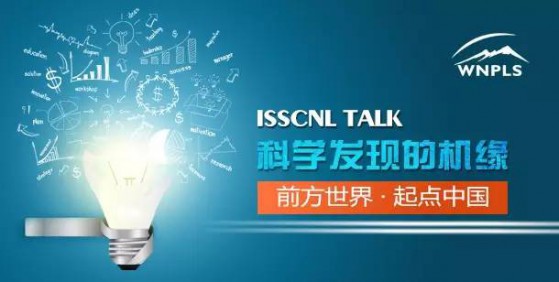
延伸阅读
9月1日至3日,2016·诺贝尔奖获得者医学峰会暨中美院士论坛将在成都盛大举行。本届大会由中国科学技术协会指导,中华中医药学会、中国医师协会、诺贝尔奖得主国际科学交流协会(ISSCNL)、世诺医学交流中心(筹)共同主办。届时有6位诺奖获得者,10余位中美院士,国家级领导人和各级政府相关部门领导,3位世界顶尖技术研发及转移中心负责人,多家重量级金融投资机构,全国各级医疗机构院长、主任、临床医生,国内外生物医药、医疗器械企业高管、科研人员,国内外医学研究科研人员、院校师生等,近千人将到场出席峰会。
